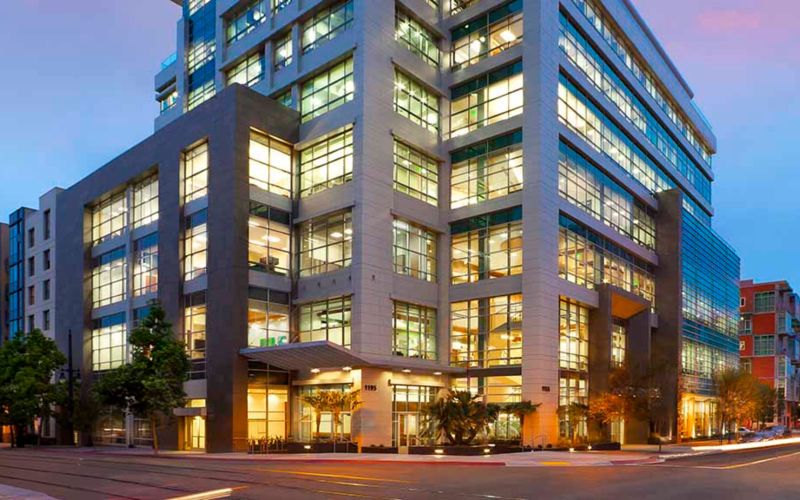Summary: Thomas Jefferson School of Law is taking a big jump down from their impressive facility to a smaller space in an office building in order to save money.
Thomas Jefferson School of Law is downgrading from its fancy, custom-built facility to a simple office building. The $90 million state-of-the-art facility in downtown San Diego was finished in 2011, at the peak of law school enrollment numbers, according to Law.com.
Since 2011, law school enrollment has gone down. Less prestigious law schools were affected more than others, Thomas Jefferson being one of the ones hit hard. At the time the campus was built, they had around 1,000 students. Now they have about half that amount with 521 enrolled for fall, according to American Bar Association data.
The law school will now share a building with Bank of America and a number of law firms, such as Lewis Brisbois Bisgaard & Smith, in a 24-story building downtown. Classes will be held in the new location this fall.
Thomas Jefferson Dean Joan Bullock explained in the press release earlier this week that the move is “an important investment in strategic planning for the law school, streamlining the educational experience for students and faculty alike.” The school states they can put money towards the students instead of rent by moving to the smaller office space. “Repositioning with smaller classes will afford students more one-on-one attention and support from faculty and administration, helping better prepare students for the practice of law from their first year through graduation.”
Law schools like Thomas Jefferson that do not have a larger university to fall back on have had to manage the effects lower enrollment numbers have on a school’s finances on their own. Thomas Jefferson was placed on probation in November by the ABA for a number of violations to the accrediting standards. Those violations included admitting students that do not “appear capable” of graduating and passing the bar, keeping a “rigorous academic program,” and lacking “financial resources” to operate. The law school was required to give a detailed explanation of their “efforts to reduce its space costs and the impact of any reduction of space on the academic program.”
When enrollment numbers dropped, Thomas Jefferson lowered its admission standards to keep the numbers up. In 2011 their median LSAT score was 151 but it is now around 144. Their bar passage rate shows a similar trend. Only 30 percent of their first-time bar takers passed the July 2017 exam, the lowest rate of California’s 21 ABA-accredited law schools.
Thomas Jefferson took out $127 million in bonds in 2008 to pay for the new building. By 2013, the debt from the bonds was too much for the school. They were able to enter into an agreement with the bondholders to turn over ownership in exchange for $87 million removed from their debt. The school then leased the building back from the holders. This allowed Thomas Jefferson to be paying $6 million each year for rent and interest on the remaining debt when they had been paying $12 million a year for principal and interest. They had hoped the deal would put the school into a “solid financial footing” but it was not enough. The new location will be a “debt-free” option.
As part of their probation, Thomas Jefferson must inform each applicant of the law school’s first-time bar pass rate.
Do you think this is a wise move for Thomas Jefferson? Who do you think will move into the fancy building they left behind? Share your thoughts with us in the comments below.
To learn more about Thomas Jefferson, read these articles:
- New Financial Agreement Gives Hope to Thomas Jefferson School of Law
- Thomas Jefferson School of Law Sued by 12 Former Students
- Thomas Jefferson School of Law Alumna Loses Lawsuit
Photo: timesofsandiego.com





































